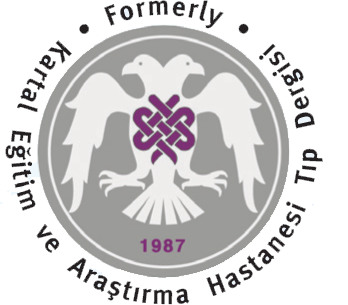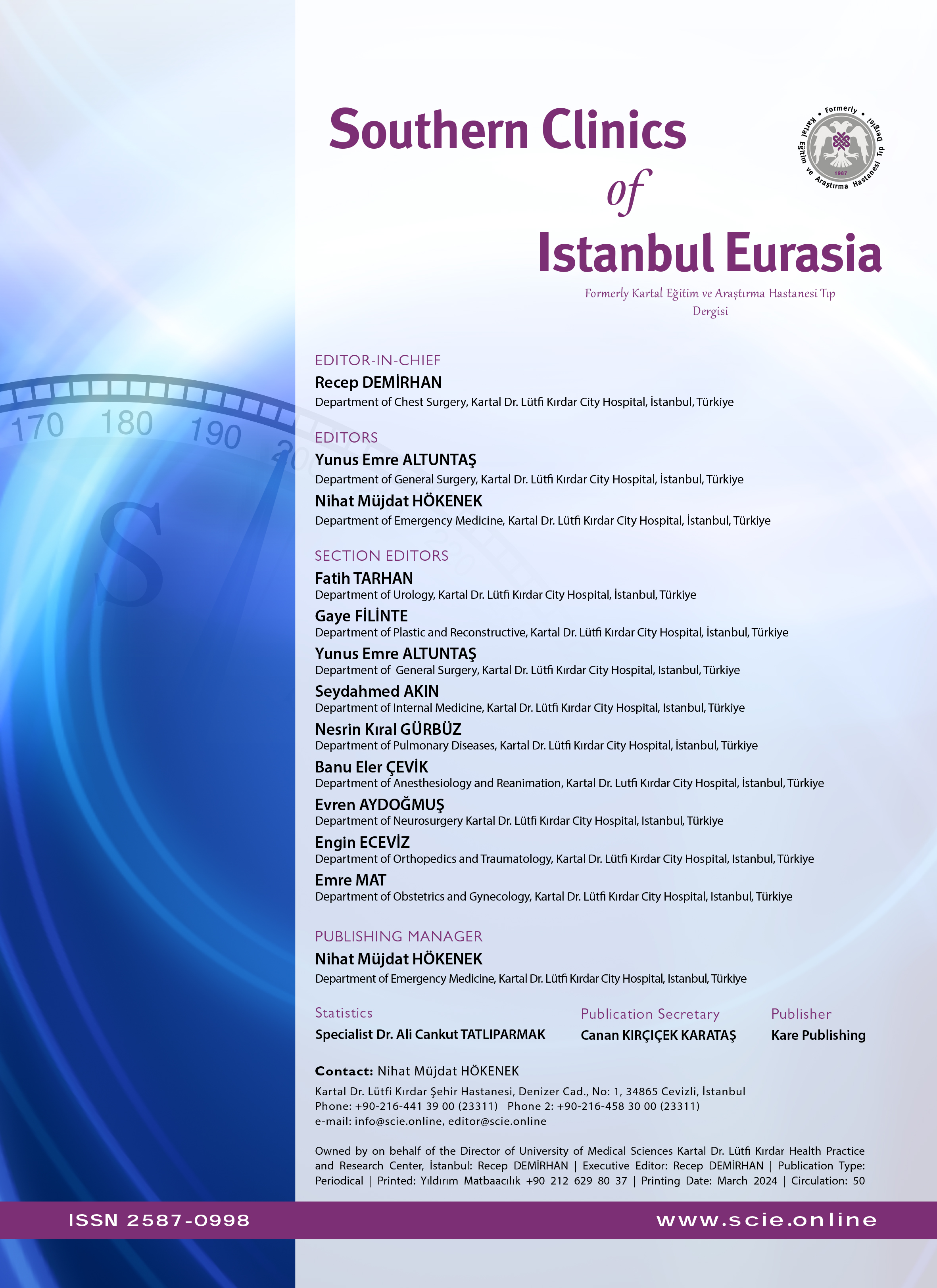Evaluation of Clinical and Radiological Results of the Perioperative and Postoperative Periods in the Endovascular Treatment of Vertebral Artery Stenosis
Ayşenur Önalan, Erdem GürkaşStroke Center Department of Neurology, Health Sciences University, Dr Lutfi Kırdar City Hospital, İstanbul, TürkiyeINTRODUCTION: The purpose of this study was to showcase the outcomes of endovascular treatment, assessing its safety and efficacy for patients with symptomatic severe atherosclerotic stenosis of the vertebral artery, who did not respond to medical management and were treated at our institution.
METHODS: We performed a retrospective analysis on patients who had suffered a transient ischemic attack or ischemic stroke and received endovascular treatment for symptomatic vertebral stenosis despite being under medical care. The endovascular techniques utilized were cataloged as angioplasty alone, balloon-mounted stenting, or angioplasty with subsequent self-expanding stent insertion. We recorded both peri-procedural complications, such as in-stent thrombosis, dissection, and guide wire perforation, as well as post-procedural complications, including stroke and transient ischemic attack. The study focused on analyzing the endovascular treatment methodologies alongside clinical and radiological outcomes.
RESULTS: From January 2020 to December 2022, 15 patients were treated, including 6 with V1 segment stenosis, 2 with V2, and 7 with V4 segment stenosis. The rate of successful stent placement was 100% (15 out of 15). Six patients (40%) received a balloon-expandable stent in addition to angioplasty, while the remaining nine (60%) were treated with a self-expanding stent following angioplasty. No peri-procedural complications were reported in patients who had extracranial stenting. However, during intracranial stenting, complications occurred in two cases: one patient had a dissection leading to occlusion of a perforator artery, and another experienced stent thrombosis. These complications resulted in ischemic strokes and subsequent mortality during hospitalization in two patients (13% of the cohort). The median follow-up duration was 15 months, with an interquartile range of 9 to 24 months. An improvement in the modified Rankin Score was noted in 10 patients, while no change was observed in 3 patients.
DISCUSSION AND CONCLUSION: Our findings advocate for the safety and probable efficacy of endovascular treatment in patients with vertebral artery stenosis who are non-responsive to optimal medical therapies. Stenting, particularly for extracranial vertebral artery stenosis, can be performed with a low rate of complications and is deemed safe.
Vertebral Arter Stenozlarının Endovasküler Tedavisinde Perioperatif ve Postoperatif Dönem Klinik ve Radyolojik Sonuçlarının Değerlendirilmesi
Ayşenur Önalan, Erdem GürkaşSağlık Bilimleri Üniversitesi, Dr. Lütfi Kırdar Şehir Hastanesi, İnme Merkezi Nöroloji Anabilim Dalı, İstanbul, TürkiyeGİRİŞ ve AMAÇ: Bu çalışmanın amacı, merkezimize başvuran ve medikal tedaviye yanıt vermeyen, semptomatik ciddi aterosklerotik vertebral arter hastalığı olan hastalarda endovasküler tedavinin sonuçlarını sunmak, güvenliliğini ve etkinliğini araştırmaktır.
YÖNTEM ve GEREÇLER: Medikal tedavi altında geçici iskemik atak veya iskemik inme geçiren, semptomatik vertebral arter stenozuna bağlı endovasküler tedavi uygulanan hastalar geriye dönük olarak analiz edildi. Uygulanan endovasküler yöntemler tek başına anjiyoplasti, balona monteli stentleme ve anjiyoplasti ardından kendiliğinden genişleyen stent yerleştirilmesi olarak kaydedildi. İşlem sırasında stent içi tromboz, diseksiyon, kılavuz tel perforasyonu gibi perioperatif komplikasyonlar ve inme, geçici iskemik atak gibi işlem sonrası komplikasyonlar kaydedildi. Endovasküler tedavi yöntemleri, klinik ve radyolojik sonuçlar analiz edildi.
BULGULAR: Ocak 2020-Aralık 2022 tarihleri arasında V1 darlığı olan 6 hasta, V2 darlığı olan 2 hasta ve V4 darlığı olan 7 hasta olmak üzere toplam 15 hastaya endovasküler tedavi uygulandı. Başarılı stent yerleştirme oranı %100dü (15/15). Bu hastaların 6sına (%40) balon anjioplasti ardından balonla genişleyen stent, geri kalan 9 (%60) hastaya ise balon anjıoplasti ardından kendiliğinden genişleyen stent uygulandı. Ekstrakranial stent uygulanan hastaların hiçbirinde periprosedürel komplikasyon görülmedi. İntrakraniyal stentleme sırasında, bir hastada perforatör arterde diseksiyon ve bunun sonucunda tıkanma görülürken, başka bir hastada stent trombozu gelişti. Bu iki hastada komplikasyonlara bağlı iskemik inme gelişti ve hastanede yatış sırasında mortalite görüldü (2/15, %13). Hastaların ortanca takip süresi 15 aydı (çeyrekler arası aralık, 9-24). Modifiye Rankin Skorunda (mRS) 10 hastada iyileşme gözlenirken, 3 hastada değişiklik görülmedi.
TARTIŞMA ve SONUÇ: Bu çalışma, optimal tıbbi tedaviye dirençli vertebral arter stenozu olan hastalarda endovasküler tedavinin güvenliğini ve potansiyel etkinliğini desteklemektedir. Özellikle ekstrakranial vertebral arter darlıklarında stentleme işlemi düşük komplikasyon oranları ile uygulanabilinir.
Corresponding Author: Ayşenur Önalan, Türkiye
Manuscript Language: English



















